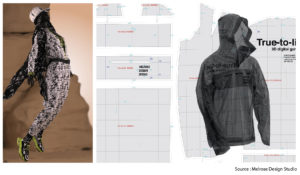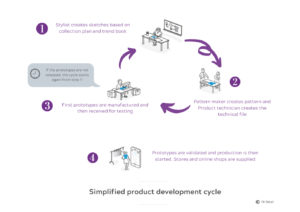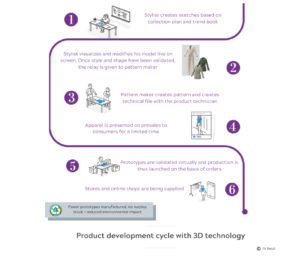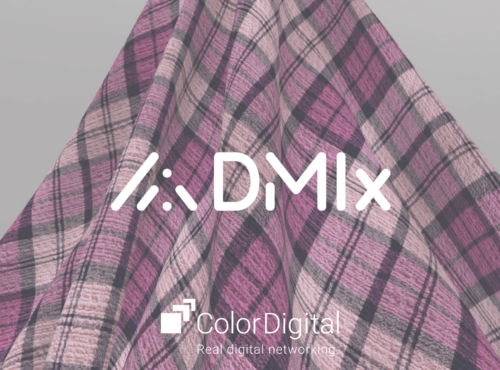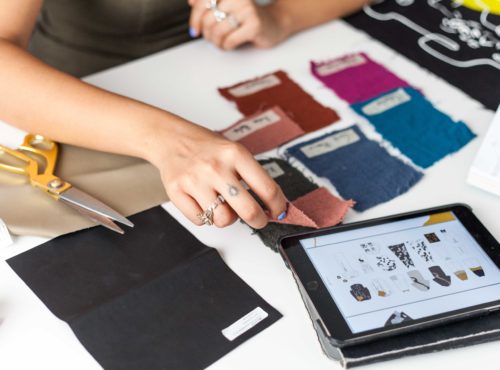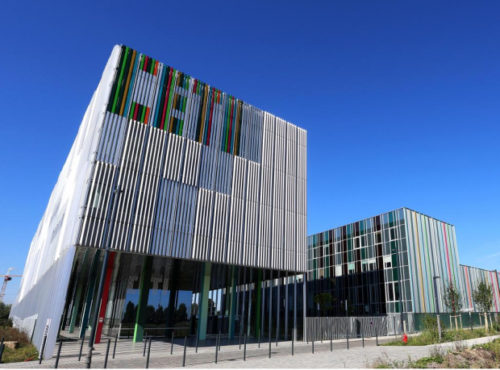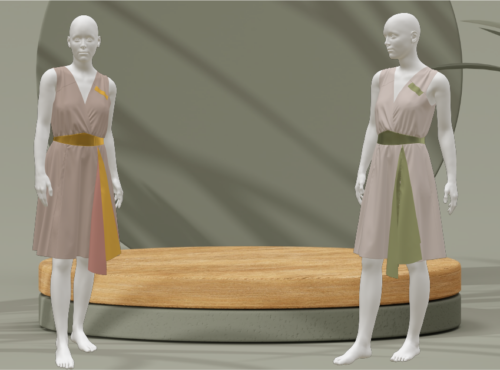 3D for a more sustainable fashion
3D for a more sustainable fashion
Event Première Vision 2020 & 3D technology
21/02/2020 by Alexandra Buor
The Fit Retail team were at Première Vision. This event for fashion professionals brings together the essentials to enable the success of a collection from design to garment. Alexandra Buor, Business Process Analyst in our team gives us the highlights of her visit, especially on 3D design technology.

« During my visit at Première Vision, I assisted to a talk on 3D design conducted by Olivier Drevon (Co-founder of Melrose Design Studio). This was an opportunity to assist to an introduction to 3D fashion Design.
Olivier Drevon is a 3D design activist. He came across his personal experience on 3D fashion design and explained how this software pushed his creativity was beyond his own limits; He also demonstrated that 3D design will have a serious impact on product life and consumer’s habits. »
When 3D is dedicated to creativity
Today’s market and short collection cycle push fashion designers to be creative in a limited time. Inspiration cannot be controlled and unfortunately in ready to wear, inspiration comes from archives, vintage shopping, or just another copy of the HIT design from the next-door neighbor. How frustrated it must be to not express your creativity freely!
Olivier Drevon is a sportwear designer expert. He came back on his experience and his discovery of 3D design software. For him, these tools enhanced his capacities to create.
How? To summaries, 3D design softwares allows you to see real life prototypes thanks to virtual reality, within the desired fabric and the wanted color. 3D softwares are more and more performant and offer many possibilities: realistic and personalized avatar, set up a scenery, virtual catwalk, etc. The prototype becomes alive without going through production. Isn’t the dream for every fashion designers? The advantage of 3D sampling is that fashion designer can participate to garment modelling, which will develop his knowledge in pattern making.
Are 3D design softwares difficult to learn? Well it will depend on your own capacity to learn and adapt. However, we recall that these softwares were thought and adapted for the fashion industry and fashion designers. Of course, a support via training will be necessary to get familiar with the software.
The 3D impact within the textile industry
The companies remain timid on moving onto 3D design software for two reasons: The initial cost for the software integration and the reorganization that it will imply. Still, the use of 3D has many positive impact such as the reduction of carbon footprint (where protection of the environment is more than needed), and the increase of the margin.
The current product cycle is cadenced by prototypes going back and forth, where lead-times stretch out, and cost so much to the companies and our planet. Today’s 3D technology is so evolved that it is now possible for the fashion designer to see all details on the prototypes and reduce the steps on garment sampling. The costs and lead-time are drastically reduced, and the margin of the company increases. The collection can be finalized with a real sample and will be used for the presales.
What if consumer’s habits could push the textile industry to go towards 3D design? The fashion industry is the second most polluting sector and is reaching close to 10% environmental impact of European consumption*.
‘Slow fashion’, recycled fabrics, or circular fashion, the industry tries to renew and find ways to reduce carbon footprint. Furthermore, 3D design offers a whole range of possibilities: imagine a future where digital collection will be produced based on consumer’s purchase. The brands would have no more problems with excess of stock, and will empower the consumer, becoming self-conscious on his consumption and its direct impact on the environment.
« A big thank you to Olivier Drevon for sharing his passion and his sportswear design experience with the ready to wear world, and. »
You wish to get into action with 3D design. Or you have more questions? Fit Retail can accompany you through every step: from the first POC to show you the power of these tools up to the training of your teams. Contact Philippe BLANCHART, our CEO and Laure GALLAND, our COO Advisory & Process.
*Source : European Parliament, United Nations Environment Program (UNEP)
21/02/2020 by Alexandra Buor

